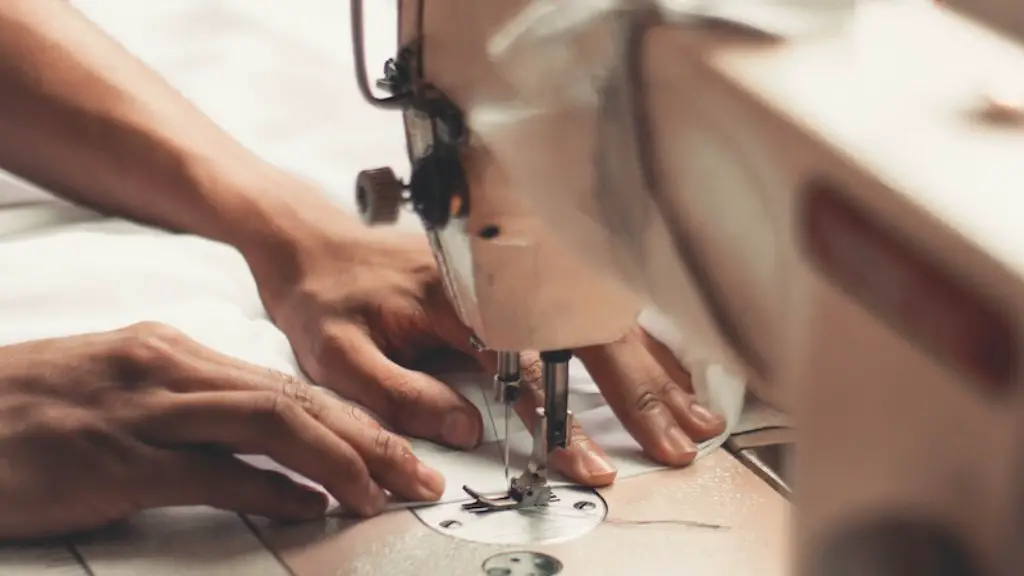Step 1: Gather Materials
To make an apron at home, begin by gathering all the materials you will need. Start with a pattern; a simple apron pattern can be made or you can buy one from a craft or fabric store. You will also need fabric, scissors, thread, a needle, and bias tape or thimble. For a more complex apron, you may also need pinking shears, a stem presser, and a seam ripper.
Step 2: Cut and Pin
Once you have all your materials, lay out the fabric on a flat surface. Place the pattern on the fabric, and pin it securely along the edges. You will now need to cut out the pattern. Be sure to cut it slightly larger than the pattern itself to allow extra room for the seam allowances. Also, be aware that the pattern may include extra, separate pieces so make sure you cut out each piece.
Step 3: Sew by Hand
Next, sew the pieces together. Since you are not using a sewing machine, you will need to sew all the pieces together by hand. Start with the main pieces and sew straight lines along the sides, making sure to leave seam allowances for extra room. Also, use strong thread that is the same color as the fabric. Once all of the pieces are sewn together, you can use the bias tape or thimble to hem the apron.
Step 4: Add Embellishments
Once you have done the basic construction, you can add on any embellishments you want. For a simple apron, you could use ribbons, lace, or sequins to decorate the edges or around the neckline. However, if you are making a more complex apron, you can use trim, piping, or applique. Start by pinning these items into place and then sewing them on.
Step 5: Finishing Touches
Finally, it is time to make the finishing touches. Start by reinforcing the seams of the apron by topstitching them. Then, use a stem presser to make sure all the edges are properly pressed. Lastly, use a seam ripper to remove any loose threads.
Step 6: Finishing up
Once you have finished your apron, you can now add the straps. To make the straps, measure out two pieces of fabric that are 4 inches wide and 24 inches long. Sew the pieces together lengthwise, and turn them inside out. Then, pin the straps to the top of the apron and sew them securely. After that, wear your apron proudly.
Aesthetics
An apron can be made more aesthetically pleasing with the right embellishments. For an apron that looks like you bought it at a store, consider adding colorful trim, bows, ribbons, or lace around the edges and bodice. Other decorative touches could be applique or decorative buttons. If you want a classic look, find a coordinating fabric to line the apron and attach everything together with decorative stitches.
Apron Styles
Aprons come in a variety of styles and designs so you can show off your own personal taste. Some popular apron styles are halter, pinafore, cross back, and tie straps. Halter aprons are simple yet stylish and can be made from a single piece of fabric. Pinafore aprons are made from two pieces of fabric, usually consisting of a top and a skirt. A cross back style is perfect for those who prefer a modern look. Lastly, tie strap aprons are perfect for anyone who wants to make an apron with straps that can be adjusted for a perfect fit.
Materials
The type of fabric you use when making an apron will depend on the type of look you are trying to achieve. Cotton is a popular choice as it is lightweight yet durable. To add extra style, consider using fabrics with prints or patterns. If you plan on making a classic apron, a heavier fabric such as denim will work best. However, if you plan on making a pinafore or halter apron, a lightweight or sheer fabric such as chiffon or voile will work best.
Accessorizing
Finally, you can accessorize your apron to make it even more stylish. Consider adding a pocket or two to store utensils and other items. For a classic look, add a coordinating belt as well. Also, add some decor such as ruffles or rick rack to liven up the look of your apron. And if you have a little time, make a coordinating head piece or bandana for a complete look.


